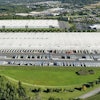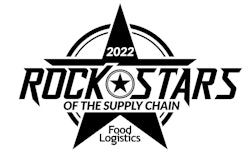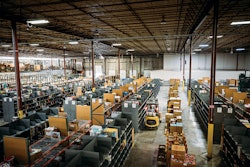
First observed in 1991, National Energy Awareness Month has inspired leaders of government agencies and private sector organizations alike to think about energy efficiency and look for more sustainable ways to manage resources. A lot has changed in the last 30 years, but sustainability rightly remains a top priority for businesses and consumers.
Concern about climate change has grown, and more companies are trying to shrink their carbon footprints. Last year, CO2 emissions from energy consumption dropped to the lowest level since 1983, partly due to the pandemic. In 2021, electric vehicle sales in the United States surged, breaking records even as supply chain issues affect availability.
It is interesting to note that sustainable technologies are also the best financially, cutting costs, reducing complexity and increasing automation. Electric cars are more efficient and require less maintenance, for example.
That said, much remains to be done to bring emissions down to sustainable levels by using energy more efficiently. Leaders in the logistics space can have a significant impact as they direct the movement of products through the supply chain. Today, logistics leaders have a new ally in reaching their sustainability objectives -- wireless power at a distance (not pad chargers).
Wireless power is already solving a persistent supply chain problem
The idea of safely transmitting power to devices was science fiction 30 years ago, but it’s very much a reality today, and it’s already helping the world’s leading retailers gain better visibility into the supply chain while saving energy and money at the same time. The more logistics operations integrate wireless power into their processes, the more energy (and manpower) they can save.
Wireless power is solving a major problem retailers and logistics hubs face today -- misplaced truck trailers. When truck drivers park trailers in massive yards at busy distribution centers, yard operators often lose track of the trailer’s exact location, which is easy to do when it’s parked among hundreds of nearly identical containers. Yard operators have to dispatch employees to search for trailers on foot, bicycle or using a golf cart, all of which can be risky in a busy yard.
Sometimes the wrong trailer is hitched to a vehicle for transportation to a loading dock, and once the error is discovered, the trailer has to be re-parked, wasting energy and employee time. But, a pilot program at a distribution center for a top retailer proved that wirelessly powered trailer trackers enable yard operators to locate the right trailer 100% of the time. Deployed nationwide, the trailer trackers could potentially save millions in labor costs and conserve a significant amount of energy.
Other ways wireless power can transform distribution and transportation activities
Wirelessly powered trailer trackers are already improving the supply chain, but the possibilities for wireless power applications that add visibility into the supply chain and improve energy efficiency are almost limitless. Tiny, wirelessly powered sensors embedded in pallets, vehicles and containers can transmit rich data to online platforms, keeping supply chain managers informed about where products are and what condition goods are in every step of the way.
The ability to closely monitor products in the supply chain in real time has always been a major goal for logistics managers, but previous efforts were limited by the challenges of powering the devices. Conventional batteries need to be replaced or recharged frequently, which introduces prohibitive labor costs and logistics issues.
Wireless power solves those problems. With wireless power options that exist today, sensors can receive power and transmit data continuously. The sensors are placed inside a space that is equipped with a transmitter that safely sends power. No workers are required to change or recharge batteries, and no bulky cords and charging mats are needed. It works similarly to how WiFi wirelessly transmits and receives data.
This wireless power technology opens up new possibilities for tracking goods through the supply chain, improving efficiency and ultimately increasing sustainability by conserving energy and reducing waste. Wireless power can enable tiny sensors to transmit valuable data about products and transport conditions, including location, temperature, weight, sudden drops, expiration dates, etc., at every point in the supply chain.
Continuous power through wireless transmitters can also help automate responses to key events, such as inventory arrival at a destination, updating product availability data and triggering an alert to workers so they can move or shelve products. Adding these capabilities could improve control over all types of inventories, from durable goods to produce and other perishable foods.
Powering sustainability without wires
Harnessing wireless power and the data wirelessly powered sensors generate can improve the supply chain in multiple ways. Using wireless power can help keep people and products safer, enable more accurate delivery time estimates and reduce product losses while cutting labor costs. But, one of the less obvious benefits worth remembering, especially at this time of year, wireless power helps companies conserve energy in numerous ways too.
Wirelessly powered sensors can deliver better visibility at every stage of the product journey to improve collaboration across the supply chain. The increased data due to more available power enables these sensors to deliver significant insights that supply chain professionals can use to continuously drive efficiency and achieve greater sustainability.

















